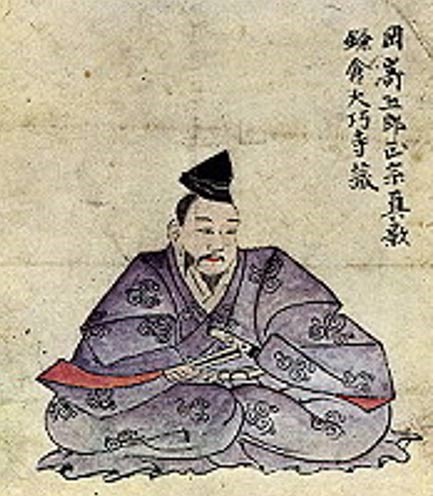One of the goals for our community content is to connect our players to For Honor via the many real world touchstones the game calls upon for inspiration. In this "Tale of Weapons" series of articles, we explore legendary weapons that are either historical or mythological, which inspire our team's creation of the weapons wielded by the Knights, Vikings and Samurai of For Honor.

A Samurai handing a tachi
Few weapons are more fascinating than the katana, the iconic sword of the Samurai and the weapon of choice of For Honor’s Orochi. The creation of a great Samurai blade is a long and complex process, where the art and experience of the crafter is key.
Goro Nyudo Masamune was a legendary Japanese swordsmith, known to be one of the best metallurgists in the world. Most of his swords were crafted during the 13th century and at the beginning of the 14th, during the Kamakura period. This historical period is significant of many changes in Japan’s socio-political context, notably the establishment of feudalism but also the emergence of the Samurai. Masamune crafted an impressive amount of weapons during that time, especially tachi (that later inspired the katana) and edo (a short blade sword). His weapons have a reputation for superior beauty and quality, especially since the steel found in this era was often impure. Although all of his swords are masterpieces, his most famous one is the Honjo Masamune that was passed from generals to shoguns throughout the centuries. The sword is known to be a Japanese national treasure, although its location is currently unknown...

An old portrait of Masamune
The name comes from, obviously, Goro Masamune, but also from General Honjo Shigenaga, who owned the sword in the 16th century. The story tells that during a battle, the sword had belonged to an enemy general who challenged Shigenaga in a duel. His helmet got cut in half by the sword, but Shigenaga managed to win the duel and took the sword, which now bears his name.

A previous work of Masamune
Honjo Masamune is a tachi-type weapon, later referred as a katana, a single-edge and very sharp sword, with a long pommel to be held with two hands. Aesthetically, Masamune was a master of hamon, a visual effect that creates beautiful patterns on the cutting edge of the blade. Hamon happens during the hardening process, when clay is applied on the blade prior to the cooling phase. The result is a beautiful effect, but also a much harder and deadly edge. Masamune’s incredible hamon technique was part of his reputation as a swordsmith, and also part of his visual signature.

Hamon on the cutting edge of a katana
Most weapons he crafted were very sought after by the elite Japanese warriors; they were the absolute reference of perfect blades. That’s why the Honjo moved from one shogun to another for almost three centuries, considered by many as a national treasure. By the year 1868 the sword remained in a family private collection, the Tokugawa. After World War II, the Allied Occupation Authority, that was occupying Japan at that time, requested that all family weapon collections were handed to the Authority. Although this policy raised a lot of frustration among the population, Tokugawa Iemasu gave his entire collection to the Mejiro police department. Apparently the collection got picked by a US 7th Cavalry Sergeant and the sword has never been seen after that. Was it given as a trophy or was it founded for its iron? No one knows at this time. Nevertheless, there is still hope, as a Japanese sword was brought to the Kyoto National Museum in 2013 to be appraised. It was established that this mysterious sword was indeed one of Masamune’s pieces, but specifically known as the Shimazu Masamune.
Masamune’s legacy of swordsmanship continued throughout the centuries, as his 24th generation descendant, Tsunahiro Yamamura, has a company that still makes katanas, as well as knives and scissors.






